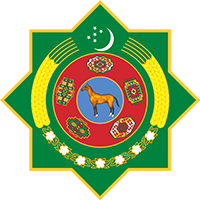Hall of Ethnography
Ethnography - a science, which studies people of the world, their origin (ethnogenesis), structure, arrangement, features of culture and everyday life and material and spiritual culture as well.
Ethnography of Turkmen people is a source, which enriches ethnological culture not only of Central Asian region, but of all the world.
Turkmen people over the millennia have created various and rich kinds of material and spiritual cultures. In the territory of Turkmenistan has arisen Jeytun culture, which is one of the most ancient centres of agriculture in the history of mankind (VII-VI millennia B.C.). Our ancestors were engaged in agriculture, domesticated animals, that is, were the first farmers and livestock breeders. Labour tools, clay figurines and decorated tableware, found in Namazgadepe, is indubitable evidence.
In antique manuscripts there is an information on inhabitants of Parthia, Маrgiana, Khurasan, Khorezm, about Dahs, Massagets, Saks, Eftalits, Alans, Oguz Turkmens, who have formed the bulk of ancient population of Turkmenistan, that is ethnogenesis of Turkmen people.
Medieval written sources and as the folk and ethnographic information take especially important place in studying of ethnogenesis and ethnic history of Turkmen people. Genealogies, historical legends, tales, heroic eposes of Turkmens «Oguznama», «Gorkut аtа», «Gorogly» - all thesa are valuable and authentic sources on occurrence of our people, its formation and ethnic history.
In medieval written sources is stated about traditions of our people, ways of housekeeping, kinds of crafts. The information on sacred family traditions of Turkmens, honouring of women, national dishes, clothes, dwelling, various and developed workmanship tells about especially settled culture of our ancestors.
In a showcase is presented the information on everyday life of people, the archival photos showing all that and articles of everyday life as well.





 Discover the rich history and culture of the Akhal Velayat.
Discover the rich history and culture of the Akhal Velayat.